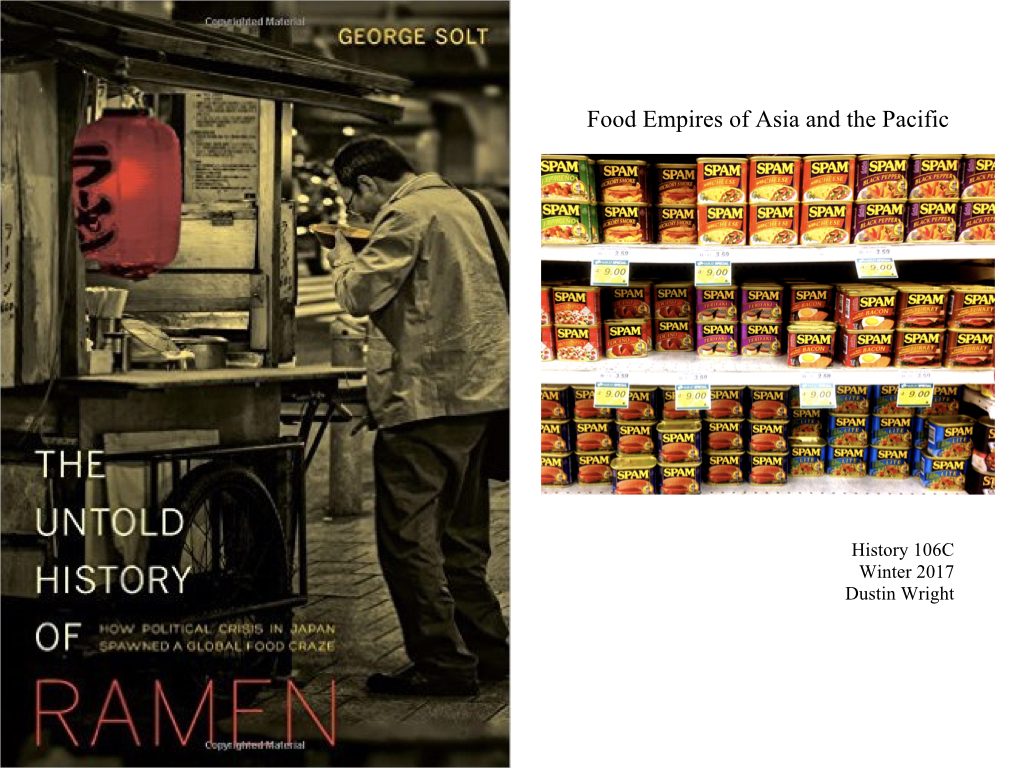This winter quarter, one of the classes I am teaching is an upper-division history course called “Food Empires of Asia and the Pacific.” I designed the course to draw from a wide temporality, covering everything from the Spice Route, to the coming of tobacco and chillies to China, to the spread of canned Spam across the Pacific, to the sushi boom in the U.S., to the invention of “ethnic” cuisine. In some ways, the course can feel like other world history courses that build their historical frameworks (colonialism, migration, capitalism, etc) around commodities like sugar, salt, cotton, etc. With our particular attention on overlapping empires as a means to understanding Pacific history, however, the course feels refreshingly new. While I was aided by colleagues near and far in thinking about the course design, it became clear to me that food history is often taught as a corollary to the European colonization of the New World. When it comes to Asia and the Pacific, much of the important work on food seems to have thus far been accomplished by scholars and non-scholars outside of the field of history (for which I’m grateful and much of this material made its way into my course reader).
Because food is inherently social (whether in its production or consumption), I decided to construct the course assignments into interactive projects rather than research papers. The final project asks students to use ArcGIS Story Map to present the trans-Pacific history of a commodity, a dish, or a restaurant. This platform allows for the presentation of narrative, multi-layered mapping, as well as audio and visual files. Students can, for example, visit a local restaurant, interview the owner/cook, and create a project that puts their material into historical perspective. Though students are responsible for a significant amount of reading (accompanied by weekly reading responses and one-time presentation of a reading in class), the bulk of course evaluation comes from the implementation of their project.
“Food Empires” is a reflection of two of my recent interests and projects. First, this class is an addendum to a senior capstone I designed and taught last year, “U.S. Bases and Social Movements in Asia,” which drew from interdisciplinary material to illustrate the environmental, social, and political histories of communities that host U.S. bases in the region. The other force behind the food class is what I hope will be my book second project, the history of Spam (the canned meat) around the Pacific.
Though I put together a fairly beefy (pardon the pun) course reader, I also assigned the entirety of George Solt’s excellent and accessible The Untold History of Ramen: How Political Crisis in Japan Spawned a Global Food Craze (UC Press, 2014). On top of the digital projects, we are also compiling a digital bibliography of food history sources and a collaborate recipe book of dishes that we discover through our research. As much as possible, I hope to make the products of our research available to anyone who may interested.
In the hopes of fostering collaboration, I’m sharing the syllabi for both of these courses and would be very interested to hear how other educators have approached food and empire in their own classrooms. I’ll have a lot more to say about the class and hope to share some of the student projects once we finish in late-March (gulp)!
Dustin Wright_Syllabus_HIS 106C Food Empires of Asia and the Pacific
Dustin Wright; Syllabus; US Military Bases and Social Movements in Asia

very good thank you